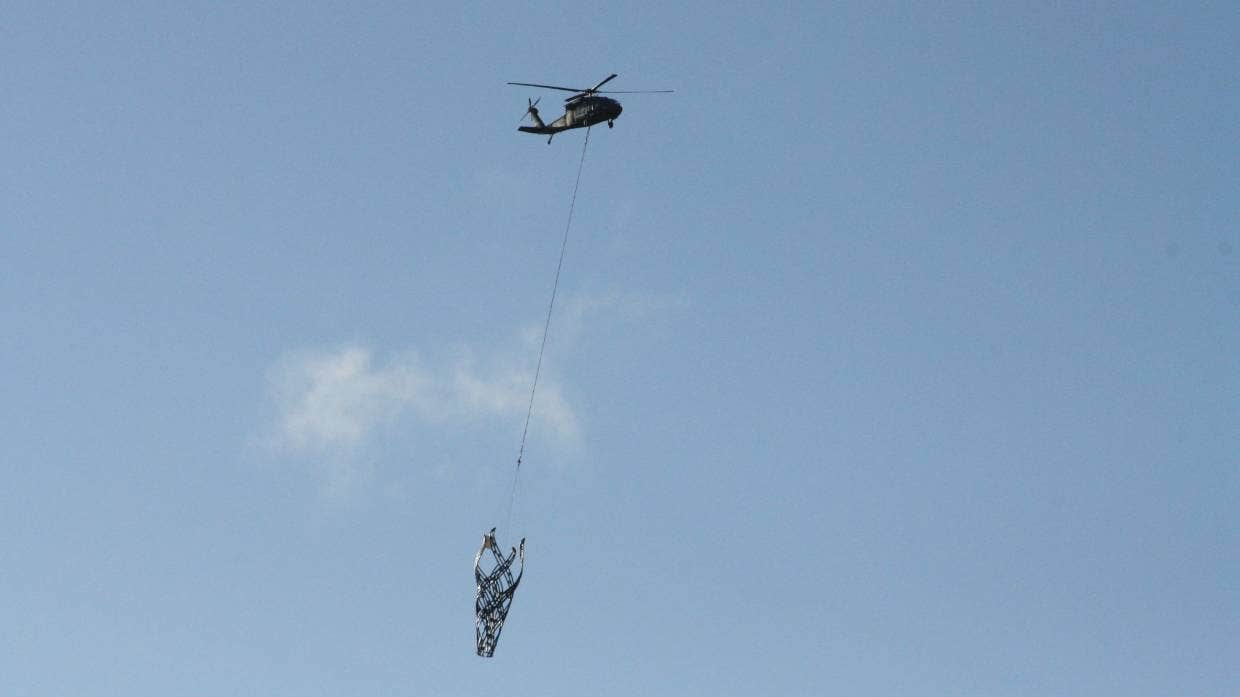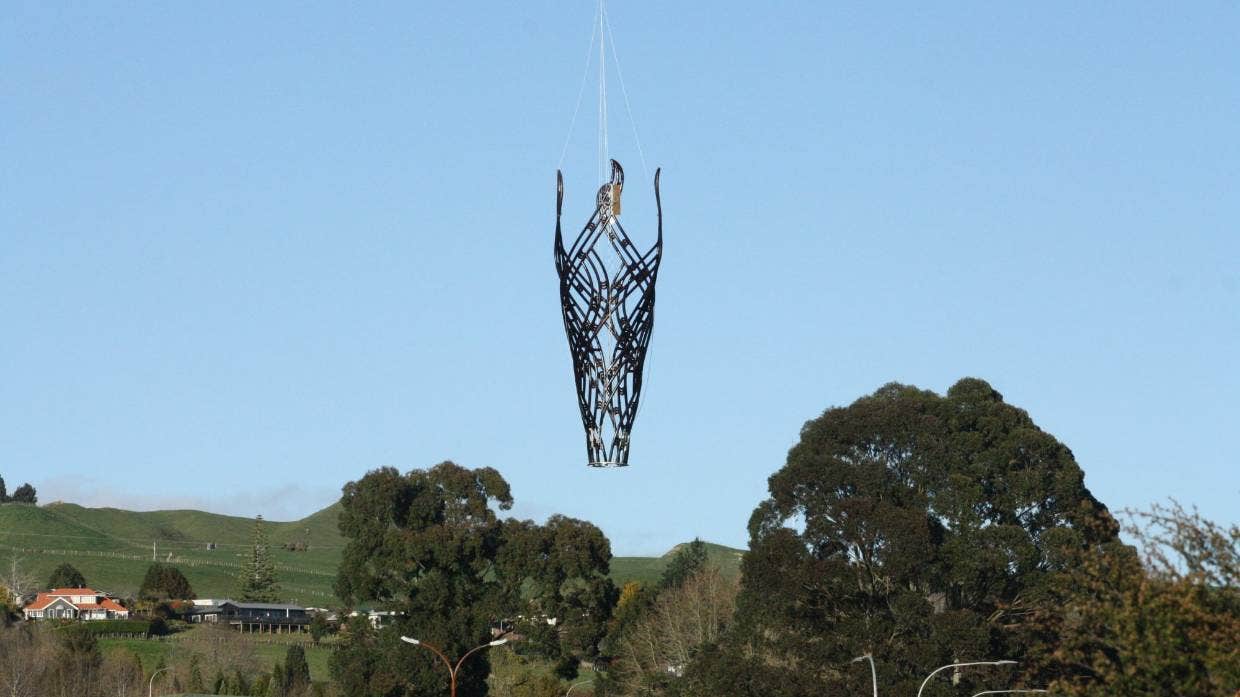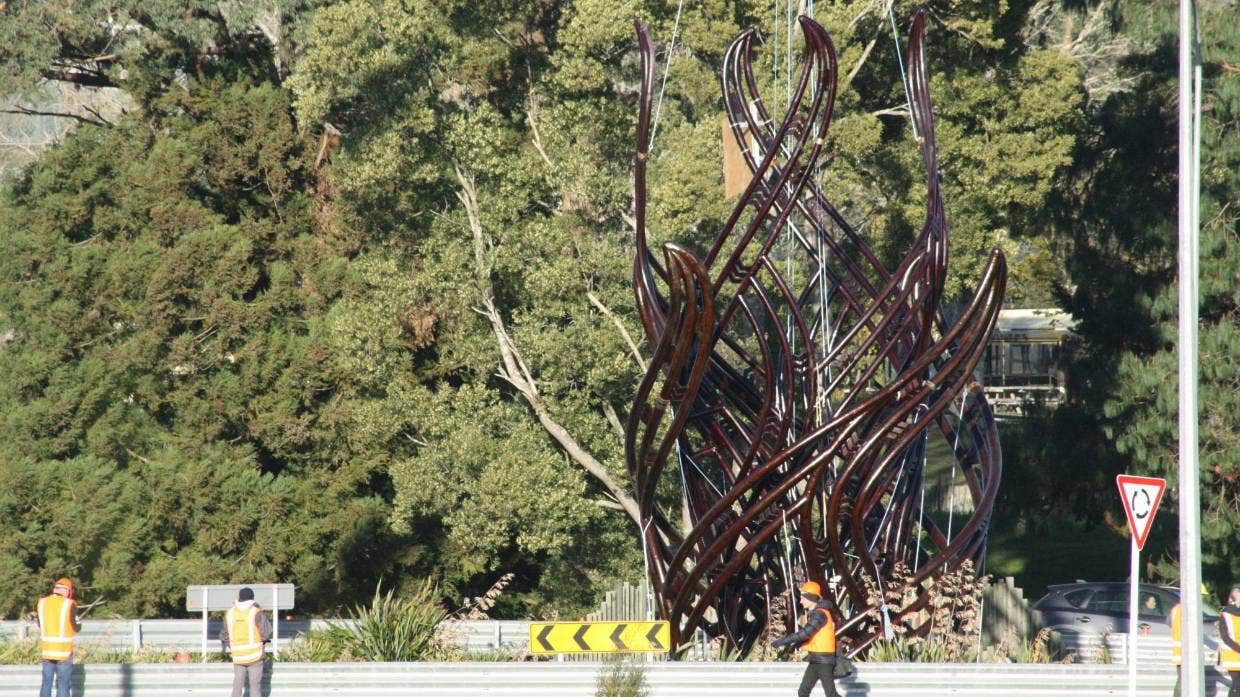Rotorua’s Hemo Gorge sculpture is the world’s largest 3D printed sculpture and was finally put in place by a helicopter more than three years after its original installation date.
On Saturday morning, two helicopter trips and a construction crane were used to lift the sculpture Te Ahi Tupua into place.
The idea of sculpture in the converted Hemo Gorge roundabout was originally proposed by the Rotorua Lakes Council in 2015, and the concept design was provided by Te Puia/New Zealand Maori Arts and Crafts Institute.
The sculpture was originally set to cost US$500,000, but was in trouble due to time delays and design issues.
Due to weight concerns, the original plan to use stainless steel had to be abandoned. The project was postponed to December 2017, when Kilwell proposed a plan to use 3D printing for design. The final fee is AU$743,029, to be paid by the Rotorua Lake District Council, NZTA, and other local investors.

The mayor of Rotorua, Steve Chadwick (Steve Chadwick) said that it will take a long time to see the sculpture in place, “It’s nice to see it is now ready.”
She said: “This is a very complex and groundbreaking project that requires a lot of innovation.”
“It faces challenges in its construction and installation, but this is because it has never been done before.
“I think it will provide a good introductory article to tell an important story about Te Arawa and Rotorua, I look forward to it becoming part of the local landscape and welcoming our handicrafts.”

This huge sculpture was divided into two parts, each of which was lifted directly into the Te Puia parking lot by helicopter, and then lifted by a crane.
The sculpture is inspired by the story of Te Arawa tohunga Ngātoroirangi, which is responsible for bringing people into New Zealand safely and illuminating the origin of geothermal.
Kilwell Fibretube CEO Craig Wilson (Craig Wilson) said that the 3D printing process takes nearly 16,500 hours, and he believes that the finished sculpture will be the largest 3D printed sculpture in the world.

